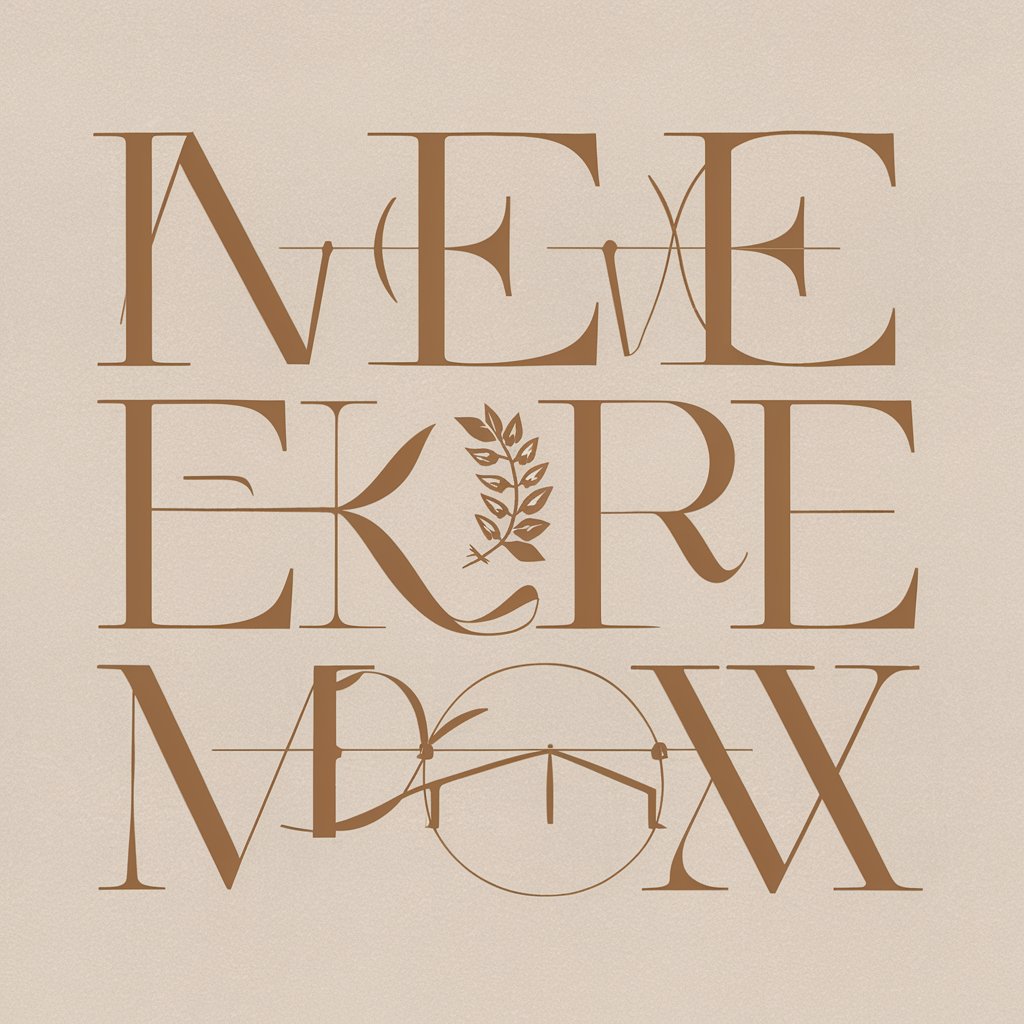Classic Design - Classic Design Insights

Welcome to the world of classic design.
Empowering Timeless Design with AI
Explain the significance of...
What are the key characteristics of...
How did the design of... influence...
Compare and contrast the design elements of...
Get Embed Code
Understanding Classic Design: Essence and Purpose
Classic Design revolves around the principles of timeless aesthetics and iconic examples of design that have stood the test of time. It's rooted in the idea that certain designs, through their simplicity, functionality, and beauty, remain relevant and influential across decades, if not centuries. Classic Design focuses on elements that transcend trends, emphasizing durability, utility, and elegance. Examples of Classic Design can be found in various domains, including the Bauhaus movement, which merged fine art with crafts, leading to functional yet aesthetically pleasing objects. Another example is Mid-Century Modern architecture, characterized by clean lines, organic shapes, and integration with nature, exemplified by the works of Frank Lloyd Wright and Charles and Ray Eames. These scenarios illustrate the application of Classic Design principles in creating spaces and objects that are both beautiful and practical, highlighting its role in fostering environments that enhance human experience through design. Powered by ChatGPT-4o。

Key Functions of Classic Design
Educational Insight
Example
Exploring the Bauhaus Movement
Scenario
Design students and enthusiasts seek to understand the impact of the Bauhaus movement on modern design. Classic Design offers comprehensive insights into its foundational principles, such as the fusion of art with industrial craftsmanship, which led to innovations in furniture design, typography, and architecture. This function serves to inspire and inform users about the historical context and enduring relevance of Bauhaus principles in contemporary design practices.
Aesthetic Guidance
Example
Mid-Century Modern Home Renovation
Scenario
Homeowners looking to renovate their space with a timeless aesthetic may turn to Classic Design for guidance on incorporating Mid-Century Modern elements. Classic Design provides advice on selecting furniture, color schemes, and layouts that reflect the simplicity, functionality, and natural integration characteristic of this style, ensuring the renovation respects the home's original architecture while updating it for modern living.
Design Inspiration
Example
Developing a Classic Brand Identity
Scenario
Businesses aiming to establish a brand identity that conveys timelessness and reliability may consult Classic Design for inspiration. By analyzing iconic brand designs, such as the minimalist elegance of the Apple logo or the enduring appeal of the Coca-Cola bottle shape, Classic Design helps businesses understand how to craft a visual identity that communicates their values and stands the test of time.
Who Benefits from Classic Design?
Design Professionals
Architects, interior designers, graphic designers, and product designers who aim to incorporate timeless elements into their work will find Classic Design invaluable. The service offers deep dives into historical design movements, iconic case studies, and principles that can elevate their projects, ensuring their creations not only serve their immediate function but also possess an enduring aesthetic value.
Design Enthusiasts and Students
Individuals passionate about design history, theory, and application can enrich their knowledge and appreciation of the field through Classic Design. Students studying design disciplines benefit from access to a wealth of examples and analyses that bridge the gap between theory and practice, preparing them for careers that value both innovation and timelessness.
Homeowners and Collectors
Those looking to imbue their living spaces with classic design elements or curate collections of iconic design pieces will find guidance and inspiration in Classic Design. It serves as a resource for making informed decisions on acquiring, preserving, or integrating classic design items and interiors that reflect personal taste while adhering to principles of timeless aesthetics.

Using Classic Design: A Guide
1. Begin Your Journey
Start exploring classic design principles without any commitments by visiting a platform offering a free trial, such as yeschat.ai, where you can engage without the need for registration or a premium account.
2. Explore Core Concepts
Familiarize yourself with foundational elements of classic design, including balance, contrast, harmony, proportion, and simplicity. Understand these principles through examples and applications in various design fields.
3. Apply and Experiment
Use the knowledge gained to apply classic design principles in your projects. This could be in graphic design, interior design, architecture, or product design. Experimentation is key to mastering the application of these timeless concepts.
4. Seek Inspiration
Study iconic examples of classic design across different periods and styles. Analyze works from the Renaissance, Bauhaus, Art Deco, and other influential movements to gain insights and inspiration.
5. Engage and Share
Join communities or forums dedicated to classic design. Sharing your work, receiving feedback, and engaging in discussions can enhance your understanding and appreciation of classic design principles.
Try other advanced and practical GPTs
Fund Management
Empowering Investment Decisions with AI

Jordan
Empowering BtoC Companies with AI-Driven Strategies

HSK Helper
Master Chinese with AI

Nanny
AI-powered Nanny Hiring Assistant

代码翻译助手
Translating Code, Connecting Worlds

Sweet Tea
Brewing the Essence of Sweet Tea with AI

social Media Manager
Elevate Your Social Presence with AI

Predict Futures
Envisioning the Future with AI

Sprüche / Zitate Ersteller (250 Stück)
Empowering creativity with AI-powered quotes

Medical Record Analyzer
Deciphering Medical Records with AI

Most Popular
Discover what's trending with AI

Dental Content Creator
Empower Your Dental Practice with AI

Frequently Asked Questions about Classic Design
What is Classic Design?
Classic design refers to a timeless aesthetic that embodies the principles of balance, harmony, proportion, and simplicity. It draws from historic design movements and is characterized by its enduring quality and universal appeal.
How can Classic Design be applied in modern projects?
Classic design principles can be applied across modern projects by focusing on functionality, aesthetic harmony, and simplicity. Whether in digital design, architecture, or product development, these timeless principles can guide the creation of designs that stand the test of time.
What are some iconic examples of Classic Design?
Iconic examples include the Parthenon in architecture, the Bauhaus movement in design and art, the Eames Lounge Chair in furniture, and the Helvetica typeface in typography. These examples epitomize the principles of classic design across different domains.
How does Classic Design differ from contemporary design trends?
While contemporary design often focuses on current trends, technologies, and materials, classic design emphasizes timeless principles and aesthetics that remain relevant and appealing regardless of temporal shifts. Classic design seeks universality and durability in its appeal.
Can Classic Design principles be combined with modern technology?
Absolutely. Classic design principles can be integrated with modern technology to create innovative solutions that are both aesthetically pleasing and functional. This fusion can lead to designs that honor timeless aesthetics while embracing contemporary needs and technologies.
